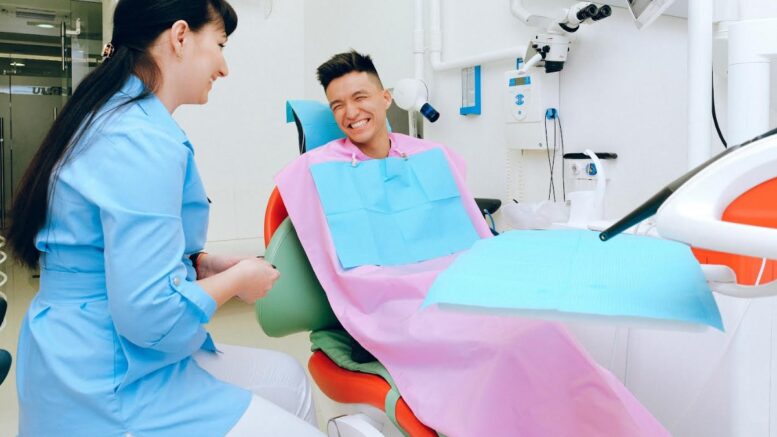Do you want to work in orthodontics but need help figuring out where to begin? The diagnosis, avoidance, and treatment of dental abnormalities are the main goals of this branch of dentistry. Orthodontists realign patients’ teeth and jaws to enhance oral health and provide aesthetically pleasing smiles. The measures you can take to enter the area of orthodontics are covered in this article.
Initial Things That You Need To Achieve
Here are a few things that you should accomplish to get started as an orthodontist:
Get A Bachelor’s Degree As A First Step
A bachelor’s degree from a college or university that has been accredited is the initial requirement for becoming an orthodontist. Most dental schools favor candidates with a background in biology, chemistry, or other relevant disciplines. However, no specific major is necessary. To improve your chances of getting into dental school after completing your undergraduate degree, having a strong GPA and engaging in extracurricular activities like volunteering or research are crucial.
Enroll In A Dental Program
Attending dentistry school is the next step after earning your bachelor’s degree. Dentistry school normally lasts four years and combines classroom learning with practical clinical experience. You will gain knowledge of general dentistry throughout this period, including oral health, anatomy, and dental treatments. It’s crucial to pick a dental school with a solid reputation in orthodontics and accreditation from the American Dental Association (ADA).
Finish A Program Of Orthodontic Residency
The next stage is to complete an orthodontic residency program after graduating from dentistry school. Advanced training in the field of orthodontics is provided throughout this program, which normally lasts two to three years. Throughout this period, you will learn how to identify and address dental anomalies, including misaligned teeth and jaws. Also, you will develop expertise in employing orthodontic tools to address these problems like braces and aligners. It’s crucial to pick a residency program approved by the ADA with knowledgeable instructors who can serve as mentors and guides.
Get Certification And Licensure
After finishing your orthodontic residency program, you must be licensed and certified to work as an orthodontist. To offer patients specialized dental treatment, orthodontic assistants, who specialize in orthodontic procedures, collaborate closely with orthodontists. Assistants require Orthodontic assistant certification. Each state has its standards for licensure, although they often include passing both a written and practical test. Furthermore, you can earn certification from the American Board of Orthodontics (ABO), which entails completing challenging academic and clinical exams. Being certified by the ABO shows that you are dedicated to the practice of orthodontic excellence and can make you stand out in a crowded employment market.

Engage in Professional Organizations and Conference Attendance
It is crucial to join professional organizations and attend conferences to keep up to date in orthodontics. Professional associations like the American Association of Orthodontists (AAO) offer advocacy, networking, and ongoing education opportunities. You may network with other orthodontic experts while learning about recent advancements in the industry at conferences and seminars.
Pursue Continuing Education and Professional Development In Orthodontics
To keep current with the newest procedures and innovations in the industry, orthodontists must pursue ongoing education and professional development. These are some justifications for why orthodontists should pursue continuous education and professional development:
Improve Clinical Skills
Orthodontists can improve their clinical abilities and acquire new talents through continuing education and professional development. Improved patient satisfaction and results may result from this.
Keep Up With Industry Developments
Orthodontics is a continually changing profession, with innovations and technology appearing often. Orthodontists may keep up-to-date on these developments and provide their patients with the most recent treatment choices by pursuing continuing education and professional development.
Improve Practice Competitiveness
Orthodontists may set themselves apart from rivals and provide their patients with a superior standard of care by seeking ongoing education and professional development. This may aid in both bringing in new patients and keeping old ones.
Increase Treatment Choices
Additional certifications and credentials can enable orthodontists to offer specialist treatments like Invisalign or orthognathic surgery and a wider range of treatment alternatives.
Tips To Build Your Practice In Orthodontics
Promote Your Business
To develop a loyal patient base, marketing must be done well. Use various platforms, including social media, email marketing, and referral schemes, to draw in new clients and retain current ones.
Build Trusting Connections
with referring dentists since they may be a reliable source of new patients. Be sure you establish a good rapport with them by staying in touch frequently and delivering top-notch patient results.
Accepting Technology
It can help you organize your practice and enhance patient results. Consider integrating digital tools like patient portals, digital records, and 3D imaging.
Conclusion
In conclusion, although being an orthodontist demands commitment and labor, it may also be gratifying. You may provide your patients with the best treatment possible and succeed in orthodontics by adhering to these guidelines and continually learning and honing your abilities.
